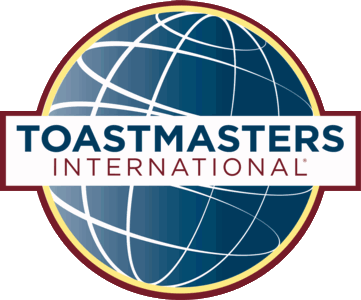Westside Toastmasters, For Public Speaking and Leadership Education
Serving Santa Monica, West Los Angeles, and Greater Los Angeles


Toastmasters has in excess of 300,000 members scattered across 15,000+ chapters in over 100 countries around the world. Companies of large scale require solid structure to work effectively. While not a commercial organization, Toastmasters is no different in the need for structure to make it's formula work. Toastmasters has an International World headquarters based in southern California with a paid staff to help coordinate logistics (i.e. providing educational supplies, tracking members, etc.) across the world-wide organization. All other organizational efforts are done by non-paid volunteer members.
The organization most members are intimately familiar with is the local club or chapter. These operate fairly independently as most community-based organizations do. Beyond the club the Toastmasters organization is sub-divided geographically with each successively higher level encompassing broader geography. The next higher level beyond a local chapter / club is an "Area", the next higher a "Division" and the next higher a "District".
What is an Area?
Clubs are grouped into Areas of three to eight Clubs. Each Area has its own Area Governor, a member of one of the clubs appointed by the District Governor to serve the Area. Area Governors are usually, but not always, members of a club in the Area they are responsible for.
Areas have Area Speech Contests once a year, with winners from the Club levels going on to the higher Area Contest. The winner of the Area Contest goes on to the Division contest.
Areas also share Area goals, determined by formulas set at World Headquarters, such as "x number of clubs at 20 members in strength" and "x number of educational "Paths" completed" in the Pathways framework in the clubs they coordinate. If an Area meets or exceeds all its goals, its Area Governor is recognized for hard work in motivating the clubs.
What is a Division?
Areas are grouped into Divisions. Divisions may be as small as one Area in size (rarely) or as have five, six, or more Areas. Each Division has its own Division Governor. Division Governors are usually members of clubs within their Division and are elected once a year at the Annual District Business Meeting. The Division Governor works with his Area Governors to motivate the clubs to high membership and to have good, effective educational programs.
Divisions have Division Speech Contests a couple times a year, with winners from the Areas coming together to compete. The Division winners go on to the District level.
Divisions have Division goals, just as Areas do. A good Division Governor will work with his clubs and Areas to increase membership and educational effort.
What is a District?
Districts in some cases are equivalent to "states" and in other cases are smaller or larger. If you think of a District as "the state organization" you won't be too far off. Districts are comprised of several Divisions. Districts are the main level of organization outside the Club; Areas and Divisions are sub-units of the District.
California has several Districts due to the large size of it's population and number of local clubs. North Carolina, on the other hand, is a single District. England and Scotland and Ireland are one District all together, and Australia and New Zealand comprise several Districts. Smaller countries with only a few clubs each are Unincorporated clubs which report directly to World Headquarters instead of to Districts.
Each District has its own set of officers, most of whom are elected at the District Spring Conference (or Fall Conference in the Southern Hemisphere). The officers include: District Director, Program Quality Director, Club Growth Director, and Public Relations Manager, among others.
And yes, Districts have their own District-wide goals. The various District officers work with the clubs, Areas, and Divisions to build membership, start new clubs, and promote the completion of "Paths" within the Pathways framework among key goals.
Districts have a couple speech contests once a year during spring, as the Division winners within a District come together at the District Conferences to compete for the District championships.
Hmmm, this is beginning to sound complicated
Perhaps, though it ensures:
Let's look at Westside Toastmasters as an example to illustrate the organization:
Amanda as a hypothetical member belongs to Westside Toastmasters (Club #638). Westside Toastmasters belongs to Area 5, Division B within District 1. Area 5 covers clubs in the city of Santa Monica and West Los Angeles, California. Division B, the next level up in the organization has Areas 1, 2, 3, 4, and 5 which cover a broader geographic breadth of the western part of Los Angeles. District 1 is approximately the western half of the coastal part of Los Angeles with downtown Los Angeles as the eastern boundary, Long Beach as the southern boundary, the Pacific Ocean as the western boundary, and the Santa Monica Mountains as the northern boundary.
Area 5 has an Area Governor who works with the Westside Toastmasters club and the other clubs in the Area. Division B has a Division Governor who works with all 20 to 25 clubs in his/her Division and with the five Area Governors under him/her. District 1 has six Divisions and its own full set of officers comparable in function to those found at an individual club but which serve all clubs (100+) within the District's geographic zone. To see how all the local chapters are divided up organizationally within District 1 go to District 1 Club Alignment.